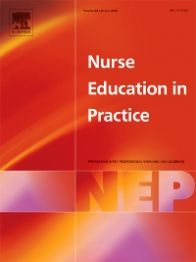Nurse Education in Practice
Nurse Education in Practice focuses on the practical aspects and the educational dimensions of nursing practice. It is a field that bridges the gap between the theoretical knowledge acquired in nursing schools and the application of this knowledge in various healthcare settings. Nurse education in practice is crucial for ensuring that nursing professionals can provide high-quality care to patients, adapt to the ever-changing healthcare environment, and continue their professional development throughout their careers.
Overview[edit | edit source]
Nurse education in practice encompasses a wide range of activities, including clinical placements, simulation-based learning, mentorship programs, and continuing professional development (CPD). These activities are designed to enhance the practical skills, critical thinking abilities, and professional attitudes of nursing students and practicing nurses.
Clinical Placements[edit | edit source]
Clinical placements are a core component of nurse education, allowing students to gain hands-on experience in real healthcare settings. During these placements, students work under the supervision of experienced nurses and other healthcare professionals, applying their theoretical knowledge to practice and developing their clinical skills.
Simulation-Based Learning[edit | edit source]
Simulation-based learning involves the use of manikins, virtual reality, and other technologies to mimic real-life clinical scenarios. This method of learning allows nursing students to practice and refine their skills in a safe and controlled environment before applying them in actual clinical settings.
Mentorship Programs[edit | edit source]
Mentorship programs pair nursing students or newly qualified nurses with more experienced practitioners. These programs provide opportunities for mentorship, guidance, and feedback, facilitating the transition from student to competent practitioner.
Continuing Professional Development[edit | edit source]
Continuing Professional Development (CPD) is vital for nurses throughout their careers. CPD activities, such as workshops, seminars, and online courses, help nurses stay up-to-date with the latest in healthcare practices, technologies, and research findings.
Challenges and Solutions[edit | edit source]
Nurse education in practice faces several challenges, including the need for adequate clinical placement opportunities, the integration of technology in education, and ensuring the relevance of the curriculum to current healthcare needs. Solutions to these challenges include partnerships between educational institutions and healthcare facilities, investment in simulation technology, and the continuous review and update of nursing curricula.
Impact on Healthcare[edit | edit source]
The quality of nurse education in practice directly impacts the quality of healthcare delivery. Well-educated and competent nurses are essential for patient safety, effective patient care, and the overall efficiency of healthcare systems. By focusing on the practical aspects of nursing education, healthcare institutions can ensure that their nursing staff are well-prepared to meet the demands of their profession.
Conclusion[edit | edit source]
Nurse education in practice is a dynamic and essential aspect of nursing that ensures the profession continues to evolve and adapt to the needs of patients and the healthcare system. By emphasizing practical skills, continuous learning, and professional development, nurse education in practice contributes to the delivery of high-quality healthcare.
Navigation: Wellness - Encyclopedia - Health topics - Disease Index - Drugs - World Directory - Gray's Anatomy - Keto diet - Recipes
Search WikiMD
Ad.Tired of being Overweight? Try W8MD's physician weight loss program.
Semaglutide (Ozempic / Wegovy and Tirzepatide (Mounjaro / Zepbound) available.
Advertise on WikiMD
WikiMD is not a substitute for professional medical advice. See full disclaimer.
Credits:Most images are courtesy of Wikimedia commons, and templates Wikipedia, licensed under CC BY SA or similar.Contributors: Prab R. Tumpati, MD

